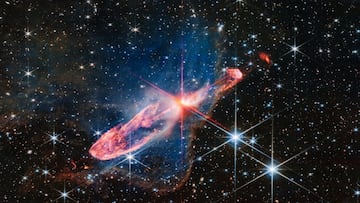This is the incredible find of the James Webb telescope on the outskirts of the solar system
The James Webb telescope has spotted new evidence that could indicate there’s a possibility of life on the outskirts of the Earth’s solar system.

The James Webb space telescope has been amazing sky watchers with discovery upon discovery since it was launched into orbit.
Its considerable spotting power has found new evidence that could indicate the presence of life on dwarf planets on the outskirts of the Earth’s solar system.
This area just outside the orbit of Neptune is known as the Kuiper Belt, which includes the former planet Pluto, now downgraded to a dwarf planet. This massive belt had been believed to be composed mostly of frozen objects.
However, the Webb telescope shows that there was more to these bodies than previously suspected.
READ ALSO: Delta offering path-of-totality flight for 2024 total solar eclipse
More than just a frozen dwarf planet
Astronomers took another look at these icy objects, and found that they could have hot interiors underneath their crusts.
Scientist Christopher Glein spearheaded new research into the Kuier Belt that was published in the science journal Icarus. He says such heat could mean there could be water on these planets. The relatively recent presence of methane also points to the possibility of the presence of oceans.
“Hot cores could also point to potential sources of liquid water beneath their icy surfaces,” said Glein.
READ ALSO: Another atmospheric river will hit California this week
Water is the key to life
Although there has not yet been evidence of life in the area, a water source often leads to speculation that the place would be conducive to the potential development of life.
The James Webb space telescope was created to help astronomers understand the universe by studying the first galaxies that formed after the Big Bang, observing the birth of stars, galaxies, and planetary systems, and exploring the origins of life in the universe.
The telescope is also designed to give data on the atmospheres of exoplanets, or planets outside our solar system, which could deliver information on whether or not they were potentially habitable.






